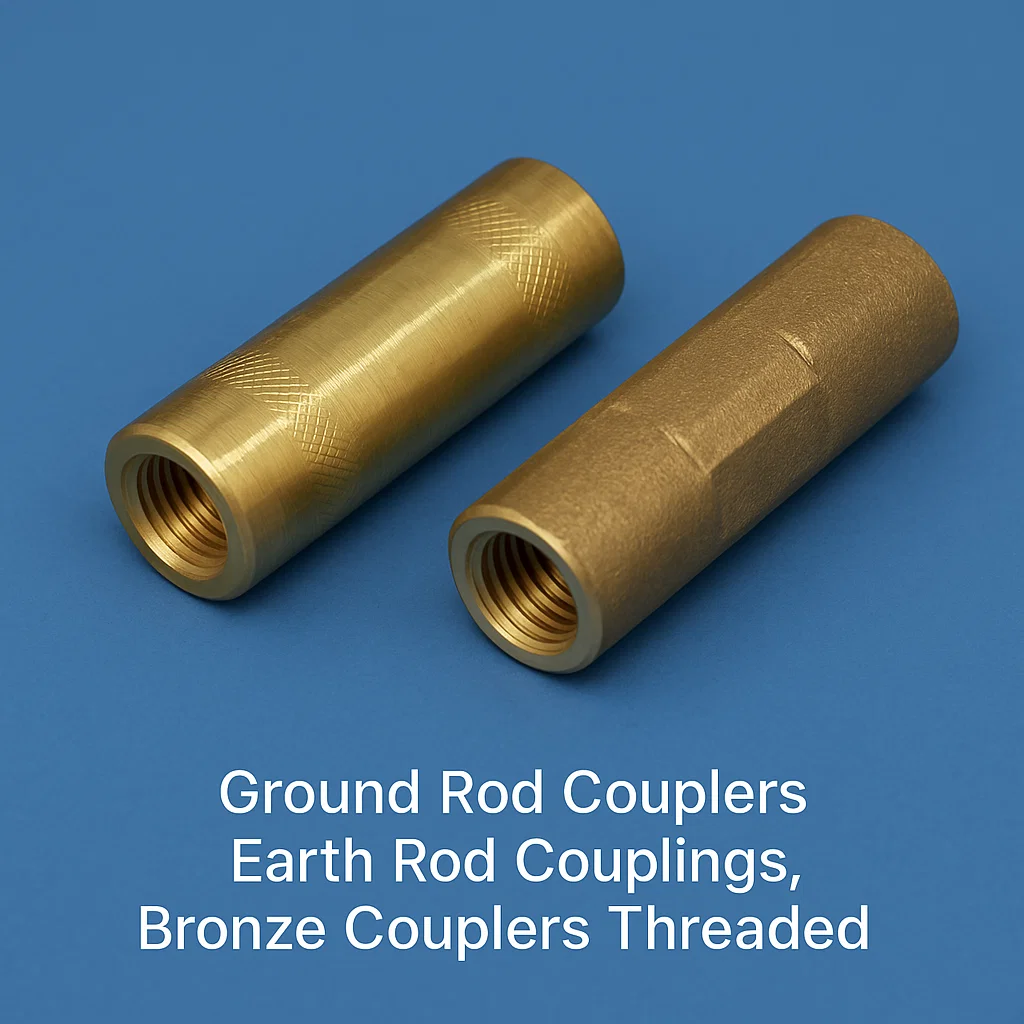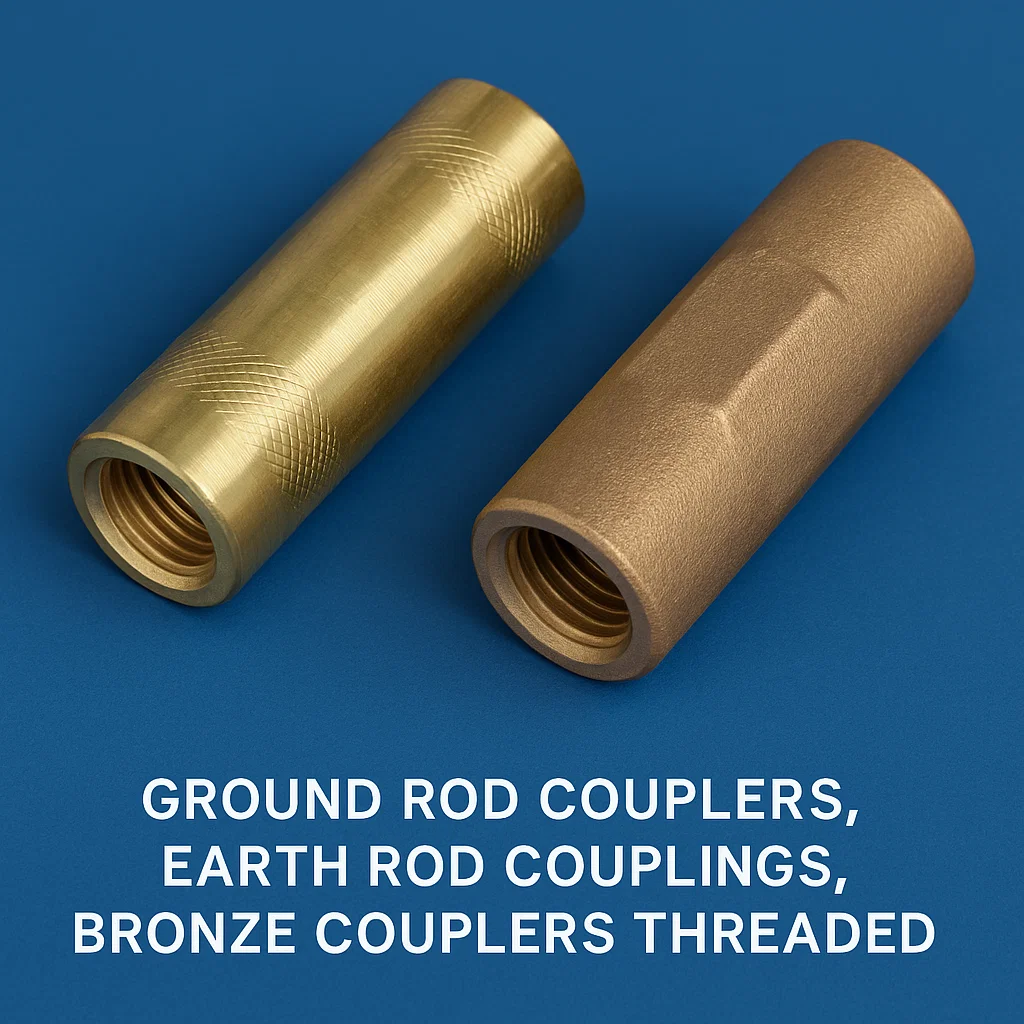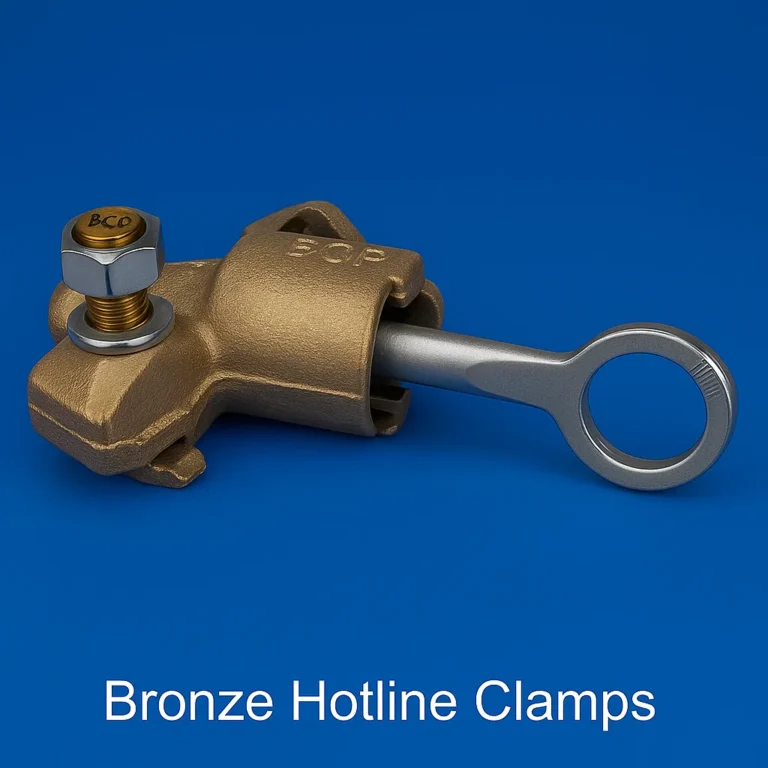Bronze Ground Rod Couplers , Bronze Earth Rod Couplers: Ensuring Uninterrupted Grounding System Integrity


A reliable grounding system is the silent, unsung hero of electrical safety. It’s the critical network that dissipates dangerous fault currents, protects sensitive equipment, and safeguards lives by directing electrical energy safely into the earth. At the heart of many of these systems are ground rods. But what happens when a single rod isn’t enough to achieve the required low resistance-to-earth? Or when you need to extend a rod past subterranean obstacles? We also offer Brass earth rod couplings and Earth rod couplers.
The answer lies in a small, yet profoundly important component: the Bronze Ground Rod Coupler.
This comprehensive guide will delve into everything you need to know about these essential grounding couplings, focusing on the common sizes of 1/2″ UNC, 5/8″ UNC, and 3/4″ UNC.
What is a Bronze Ground Rod Coupler?
A bronze ground rod coupler (or grounding coupling) is a threaded sleeve, typically made from high-quality, low-resistance bronze, designed to join two driven ground rods end-to-end. This allows electricians and engineers to create a continuous, deep grounding electrode by connecting multiple rods together, effectively extending the reach of the grounding system into lower-resistance, moister soil strata.
Key Function: To provide a permanent, low-impedance, and mechanically robust connection between two individual ground rods.
Why is the Material—Bronze—So Critical?
Not all couplers are created equal. The choice of bronze is deliberate and based on fundamental principles of electrical engineering and corrosion science:
Galvanic Compatibility: Ground rods are most commonly made of copper-bonded or galvanized steel. Bronze is electrochemically close to these materials on the galvanic series. This compatibility drastically reduces the risk of galvanic corrosion, which would occur if a dissimilar metal like stainless steel or aluminum were used. Corrosion at the joint would increase resistance and cause the grounding system to fail over time.
High Conductivity: Bronze offers excellent electrical conductivity, ensuring that the fault current path remains low-resistance across the entire length of the extended rod. The coupler should not be the weak link in the chain.
Exceptional Strength and Durability: Bronze is a strong, non-sparking, and malleable metal alloy (primarily copper and tin) that can withstand the immense physical force of being driven into the earth without cracking or deforming.
Corrosion Resistance: Bronze naturally resists corrosion from soil moisture and chemicals, ensuring the long-term integrity and performance of the buried connection.
Sizes and Thread Specifications: 1/2″, 5/8″, and 3/4″ UNC
Standardization is key in the electrical industry. Bronze ground rod couplers are manufactured to precise thread standards to match the corresponding ground rods.
1/2″ UNC Ground Rod Coupler: Designed for connecting 1/2-inch diameter ground rods. This size is often used in residential applications, telecommunications, and for smaller grounding electrodes.
5/8″ UNC Ground Rod Coupler: The 5/8″ size is arguably the most common and versatile. It is the industry standard for the majority of commercial, industrial, and residential grounding systems using 5/8″ x 8′ or 5/8″ x 10′ copper-bonded ground rods.
3/4″ UNC Ground Rod Coupler: Used for heavy-duty applications where larger diameter rods are specified. These are common in industrial facilities, power substations, lightning protection systems, and in areas with very high soil resistivity that require a more substantial electrode.
UNC stands for “Unified National Coarse,” which is the standard thread type used on most ground rods in North America. It is crucial to ensure the coupler’s threads match the rods’ threads perfectly for a secure fit.
Key Applications: When Do You Need a Ground Rod Coupler?
Achieving Lower Resistance: The primary reason to extend a ground rod is to drive it deeper into the earth. Soil resistivity often decreases with depth as moisture content increases. A longer rod can cut resistance-to-earth in half, which is vital for meeting NEC (National Electrical Code) and other regulatory requirements.
Navigating Subsurface Obstacles: If a rod hits bedrock or a large stone, it can be pulled up, a coupler added, and a new section driven in at a slightly different angle to bypass the obstruction.
Repair and Extension: If an existing ground rod has been damaged or corroded at the top, it can be cut off below the damage, and a new rod section can be coupled on to extend it back to the required grade level.
Meeting Code Requirements: The NEC and other standards often specify minimum driven depths for ground electrodes. Couplers make achieving these depths possible and practical.
Proper Installation Best Practices
A coupler is only as good as its installation. Follow these steps for a reliable, code-compliant connection:
Drive the First Rod: Drive the first ground rod into the earth until only a few inches are exposed above grade.
Clean and Prepare Threads: Ensure the threads on the top of the driven rod and the new rod are clean and free of dirt, debris, or damage.
Thread the Coupler: Screw the bronze coupling onto the top of the driven rod. Hand-tighten it as much as possible.
Secure the Connection: Using a grounding rod installation tool or a large pipe wrench, give the coupler an additional one-quarter to one-half turn to ensure a tight, metal-to-metal contact. Do not over-tighten, as this can gall the threads or crack the coupling.
Add the Next Rod Section: Thread the new ground rod into the top of the installed coupler.
Drive the Assembly: Continue driving the new rod section, which will simultaneously drive the connected coupler and the first rod deeper. Use a driving tool (a ground rod driver attached to a jackhammer is common for deep drives) that protects the threaded end of the new rod from deformation.
Conclusion: Don’t Compromise on the Connection
In the critical chain of a grounding system, every link must be robust and reliable. Bronze ground rod couplers in sizes 1/2″ UNC, 5/8″ UNC, and 3/4″ UNC are not just simple connectors; they are engineered components vital for ensuring the longevity, safety, and effectiveness of your electrical grounding infrastructure.
When specifying or installing an extended ground rod system, always choose high-quality, UL-listed or CSA-certified bronze grounding couplings from a reputable supplier. This small investment guarantees a low-resistance path to earth that will perform its life-saving function for decades to come.

